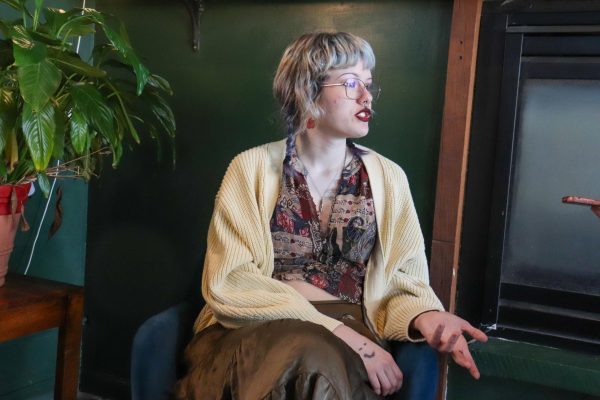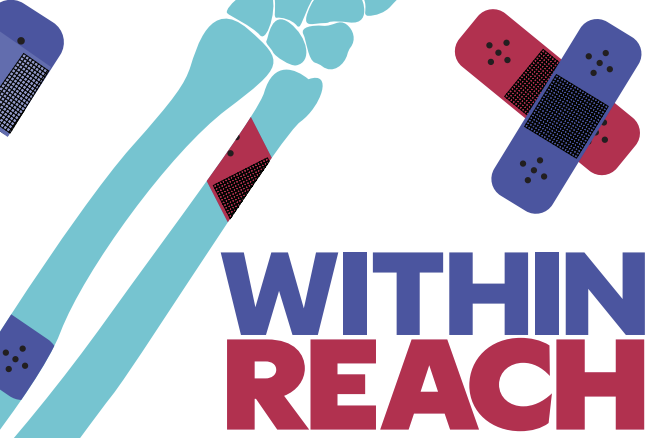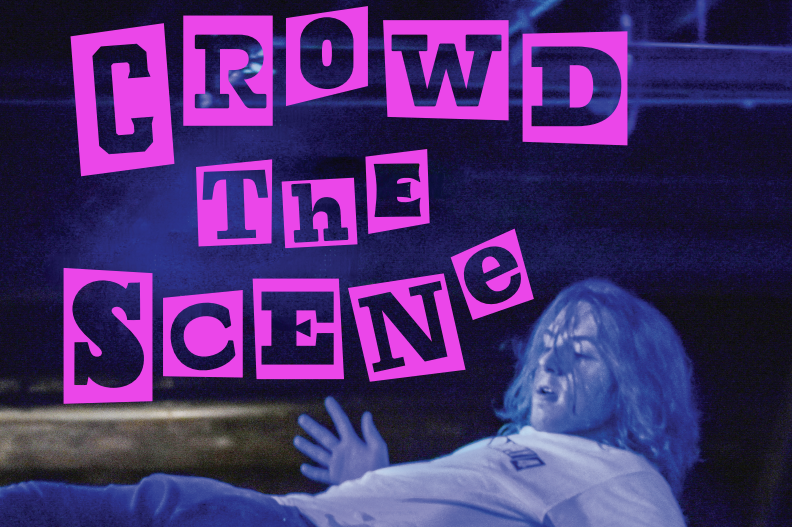Last year, in the weeks leading up to spring break, I looked around and realized that a lot of my friends were no longer eating their lunch. Vera Bradley and Target lunch boxes packed full of food were stowed away in backpacks, never to be taken out at the table. Nobody said anything about it, but we did discuss where everyone was going for the break.
Florida was a popular spot, so was one of those Bahamas cruises, and many were visiting family up north. As conversation about destination continued, I heard people discussing bikini bodies and Instagram posts. One of my friends was cutting whole food groups, some were going the “normal” dieting route, and others were fasting in preparation.
I tried not to put much thought into it, but as I ate my leftovers from the previous night’s dinner at the circular cafeteria table, my stomach flipped. I was so embarrassed to be one of the only ones eating.
This idea of shaping up for events was nothing new to me. I have struggled with an eating disorder (ED) since I was 11, and every day I have to fight the temptation to fall back into the scarily comforting pattern. Still, I’ve never been unaware of the unhealthy behaviors I exhibit — I nearly craved the sickness.

When I was younger I was on a lot of social media, and at the time, a lot of creators were coming forward with their stories of how they had struggled with disordered eating. While most creators had good intentions, I didn’t heed their warnings. Being young and loving these influencers with everything in me, I took their stories and ran with them. I wanted to be like them, and if this was the way, this was the way.
I did home exercises in my room, crept out of bed in the middle of the night to use my mom’s elliptical in the den, and told all of my sixth grade friends that I was swearing off sugar, carbs, fats, and anything else “unhealthy” you could find in food. I dreamt of being like my idols and thought that this way of chasing thin would lead me to be a 20-something, beautiful bombshell YouTuber living in L.A. This kind of addiction to perfection has followed me from 11 to now, at 16. I’ve gone in and out of different low-impact recovery methods and today I can say that the idea of thinness stays mostly in the back of my mind — not taking over every thought, but still there, creeping up in moments of weakness.
However, not every ED story nor recovery journey is the same.
Cyres McCay, 18, a senior at Atherton High School, has not only struggled with their ED, but also with finding treatment.
“I’ve always had pretty low self-esteem and body image, especially growing up because I was taller and I just kind of felt like I didn’t really fit in looks wise,” McCay said. “But after the death of my mom, I kind of used it as a coping mechanism in a way, as a way of controlling my emotions because I was in a time of really a lot of turmoil in my life.”
In addition to this struggle, McCay was lost on where to go for treatment. They had to choose between partial hospitalization programs (PHP) and intensive outpatient programs (IHP) for treatment. McCay isn’t alone in this struggle. Others in Louisville also find it difficult to get adequate treatment, specifically inpatient. This is because Louisville does not currently have any inpatient care facilities for ED patients, forcing people to travel outside of the city for more intensive care.
Along with a lack of recovery resources, the issue of untreated disorders is growing. The National Association of Anorexia Nervosa and Associated Disorders found that an estimated 9% of the U.S. population will struggle with an ED in their lifetime, not including the many that will go undiagnosed. Fifteen percent of American women will experience an ED by their 40s or 50s, but only 27% of those will receive any treatment.
In order to begin making treatment more accessible, it is crucial to understand the complexity and range of the various types of EDs as well as the challenges they present.
Defining
White, thin, women make up the majority of ED stereotypes, but EDs do not only affect a certain demographic of people. Black, indigenous and other people of color are affected by EDs at similar rates compared to their white peers. Plus, men represent up to 25% of people with EDs.
With this being said, there are many different types of disorders that come with their own set of niche behaviors, and in some cases, a person may struggle with multiple. We often hear stories about anorexia nervosa and bulimia. Anorexia is a restriction-based disorder often tied to a low body image. Although it is often glamorized on social media, anorexia is not a quick route to thinness. Bulimia is an ED with periods of overeating and purging, often associated with low body image like anorexia.
Contrary to popular belief, EDs extend farther than just restriction-based patterns. For example, binge EDs are linked to the overconsumption of food in a short amount of time and can cause feelings of losing control over oneself. Particularly among adolescents, it is one of the most common chronic illnesses.
However, lesser-known disorders like ARFID and Orthorexia also significantly impact people’s lives (see sidebar for more details).

Recovery
It’s important to remember that recovery is far from linear — it’s a spectrum. Treatment is not as simple as the quick-fix revelations in some media portrayals. Rather, it can include going through multiple forms of recovery.
“They call it a revolving door disorder because about 50% of people who receive treatment end up relapsing and having to go back to treatment,” said Taylor Porter, who is doing ED research in Louisville.
This spectrum ranges from self treatment and self medication to more involved methods like reaching out for professional guidance or therapy.
A significant step up in the level of care can be found in IOP and PHP. Both are for patients that require extremely structured treatment and support, but do not need 24-hour hospital style care. IOP sessions typically span 2-3 hours, occurring 3-5 days per week, and PHP sessions are typically over 6 hours of support 5-7 days a week.
Complete inpatient hospitalization is the most intensive form of care, with a goal of providing round-the-clock medical and psychiatric services based on severity and diagnosis. There is also residential care, where people live temporarily while receiving treatment. These more intensive inpatient and residential types of care are sometimes necessary depending on the severity of the case and amount of support an individual needs.
Within Kentucky’s treatment landscape, there are therapists that specialize in EDs, but Louisville Center for Eating Disorders (LCED) is the only treatment facility that offers methods like IOP and PHP. However, LCED does not offer residential care, meaning that it is unavailable in Kentucky.
Despite this highest form of treatment not yet being offered at LCED, Cheri Levinson, the clinical founder, remains instrumental in advancing ED care in Louisville. As an associate professor at University of Louisville (UofL) and director of the Eating Anxiety Treatment (EAT) Lab — a research lab devoted to improving the future of care — her dedication to her work is clear.
“I grew up in Louisville, Kentucky, and I had friends and family who had eating disorders and there wasn’t really anywhere for them to go to get help,” Levinson said.
In November of 2023, the National Institutes of Health (NIH) awarded Levinson and her team at EAT Lab a total of $11.5 million in grants. NIH distributed the money in three segments, each for different causes to better understand and address the effects that EDs have.
They received two grants, nearly $4 million each, one for research on the development of EDs throughout childhood and beyond, and the other to better identify the patterns of anorexia. Levinson also received the NIH Director’s New Innovator Award, which constituted an additional $4 million toward her research. Levinson is the first UofL professor, as well as the first person studying EDs to receive the award, which NIH grants each year to early stage researchers proposing large, impactful projects. The money will go to furthering the creation of personalized treatment for EDs, as well as integrating demographic factors.
LCED and EAT Lab lead innovative work and are at the forefront of ED research, but for all of Kentucky, ED care is still largely inaccessible.
“If you look at the map of eating disorder treatment, it’s very concentrated in certain areas,” said Emma Crumby, a member of Levinson’s EAT Lab research team. “And a lot of times people have to travel hundreds of miles just to get eating disorder care, and it’s also really inaccessible financially, too, so it costs thousands of dollars to send someone to a higher level of care for eating disorders.”
These expenses are not overlooked, and Levinson’s team is currently working on new ways to reach out to more people and change treatment styles.
“We are pioneering treatment that is going to be individualized to the person instead of using cookie cutter treatments, and I think it can change the face of treatment, not only for eating disorders but treatment for all psychiatric illnesses,” Levinson said.
These “cookie cutter treatments” are how, in various care facilities, people are being treated in group therapy sessions and for EDs in general. They may not be receiving treatment personalized to themselves and their specific disorder. It’s important that each treatment is customized, as peoples’ EDs come from an array of life experiences and trauma. In many cases, EDs can coexist, and specialized treatment is necessary to make sure all aspects of a person’s case are accounted for. This was true for McCay.
“I mainly deal with restrictive eating. I have also struggled with binging and purging,” McCay said.
Porter, another member of Levinson’s research team, is directly working on solving this “one size fits all” issue.
“I’m essentially developing an app for women to use on their phones or on their computers to do a self-guided treatment that’s specific to their symptoms,” Porter said.
Porter’s app aims to eliminate long waitlists for care to augment accessibility. Users will answer a multitude of questions to determine their specific symptoms and needs, and then the app will guide them through treatment.
“We made little animated videos for them to listen to, and little interactive ways for them to put in questions,” Porter said.“ And treatment’s not typically very fun, so just trying to make it as interactive for people as possible.”
Regarding the future of in person treatment, there are people in Louisville like Levinson and her team that are taking steps in the right direction. Things are looking up.
A Bigger Picture
“It’s really just combating the pressures we get every day to conform to a certain look and assign value and worth to this outward appearance,” Porter said. “Reminding the people around you that their value and worth is not attached to superficial things like long hair, clear skin and a specific weight I think would be really helpful!”
Porter calls this “body activism,” and I can see the first hand effects of this strategy. One small compliment when you’re feeling rough on yourself can make anyone’s day, and I know my friends could agree. However, while these small scale actions can make a world of difference, there often remains a need for it to be paired with more intensive support. In many cases, this pairing can create a more well-rounded support system for people going through EDs.
This is why it’s important to remember that programs like LCED and EAT Lab are not the only solution, but rather, a part of a greater one. And now, our city is ready to be a part of this bigger picture — Louisville is ready to get with the program.











